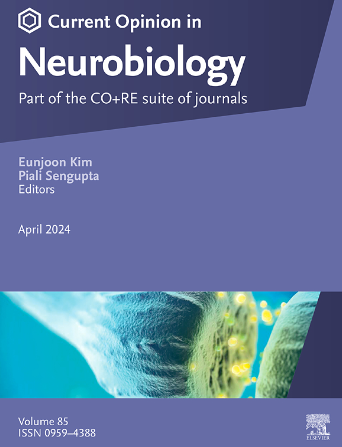Microbial regulation of interoception
IF 5.2
2区 医学
Q1 NEUROSCIENCES
引用次数: 0
Abstract
Interoceptive pathways communicate between the body and the brain to coordinate behavioral responses to changes in the internal milieu. An important contributor to the internal milieu of the body is the gastrointestinal microbiome. Here, we conceptualize the role of the microbiome and microbiome-derived metabolites in interoceptive processes that enable homeostasis maintenance. We highlight four key features that make the microbiome a valuable sensory source for interoceptive processes: its capacity to engage canonical sensory pathways, dynamic responsiveness to environmental perturbations, diurnal oscillations aligned with host circadian rhythms, and the selective gating of sensory information through the intestinal barrier. We further explore how microbiome-derived sensory information contributes to homeostasis, imparts valence to events and cues, and serves as a substrate for memory. Collectively, we present a framework for understanding interoceptive dysfunction through the lens of microbiome–host interactions.
内感受的微生物调控
内感受通路在身体和大脑之间进行沟通,以协调对内部环境变化的行为反应。对人体内部环境有重要贡献的是胃肠道微生物群。在这里,我们概念化微生物组和微生物组衍生代谢物在维持体内平衡的内感受过程中的作用。我们强调了使微生物群成为内感受过程有价值的感觉来源的四个关键特征:它参与规范感觉通路的能力,对环境扰动的动态响应,与宿主昼夜节律一致的昼夜振荡,以及通过肠道屏障的感觉信息的选择性门控。我们进一步探讨微生物组衍生的感觉信息如何有助于体内平衡,赋予事件和线索的价值,并作为记忆的基础。总的来说,我们提出了一个通过微生物群-宿主相互作用来理解内感受功能障碍的框架。
本文章由计算机程序翻译,如有差异,请以英文原文为准。
求助全文
约1分钟内获得全文
求助全文
来源期刊

Current Opinion in Neurobiology
医学-神经科学
CiteScore
11.10
自引率
1.80%
发文量
130
审稿时长
4-8 weeks
期刊介绍:
Current Opinion in Neurobiology publishes short annotated reviews by leading experts on recent developments in the field of neurobiology. These experts write short reviews describing recent discoveries in this field (in the past 2-5 years), as well as highlighting select individual papers of particular significance.
The journal is thus an important resource allowing researchers and educators to quickly gain an overview and rich understanding of complex and current issues in the field of Neurobiology. The journal takes a unique and valuable approach in focusing each special issue around a topic of scientific and/or societal interest, and then bringing together leading international experts studying that topic, embracing diverse methodologies and perspectives.
Journal Content: The journal consists of 6 issues per year, covering 8 recurring topics every other year in the following categories:
-Neurobiology of Disease-
Neurobiology of Behavior-
Cellular Neuroscience-
Systems Neuroscience-
Developmental Neuroscience-
Neurobiology of Learning and Plasticity-
Molecular Neuroscience-
Computational Neuroscience
 求助内容:
求助内容: 应助结果提醒方式:
应助结果提醒方式:


